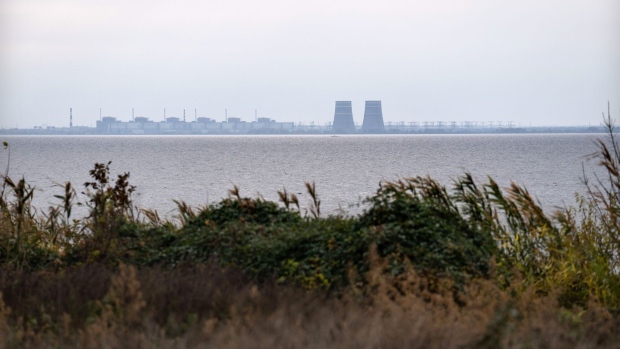Jun 6, 2023
Ukraine Nuclear Plant Faces New Threat From Dam’s Destruction
, Bloomberg News

(Bloomberg) -- The destruction of a massive dam in Ukraine has opened up a new threat to the Zaporizhzhia nuclear plant, Europe’s largest, which has faced numerous risks since the onset of the war with Russia.
The Kakhovka hydroelectric dam — which was breached early Tuesday — supplies critical cooling water to the Zaporizhzhia nuclear plant in southeast Ukraine. That water draws heat from the cores of the site’s six reactors and from the ponds where spent fuel rods are stored.
While the reservoir’s water levels are falling, there’s a sufficient supply to make a radioactive disaster highly unlikely in the near term, said Jacopo Buongiorno, a professor of nuclear science and engineering at the Massachusetts Institute of Technology.
“They have enough water at the site for many weeks,” Buongiorno said in an interview. A single fire hose would provide enough cooling for the fuel at Zaporizhzhia, and fire trucks already are at the facility, he said.
If necessary, the trucks could pump water from the nearby river, and a cooling pond on high ground also could supply water. Even if there were no water, the facility’s operators could use air-cooling techniques to draw heat from the fuel, Buongiorno said.
Uranium fuel rods at an operating reactor are extremely hot, and without adequate cooling, they can melt or catch fire. However, the reactors at Zaporizhzhia have all been shut down for months, and the fuel is no longer hot enough to trigger such a disaster, according to the American Nuclear Society.
Still, the situation is serious, and the International Atomic Energy Agency is carefully monitoring the potential risk to a nuclear plant in a war zone.
“We are following this by the minute,” Rafael Mariano Grossi, director general of the IAEA, said in a video statement posted Tuesday. “The consequences may be grave.”
©2023 Bloomberg L.P.





